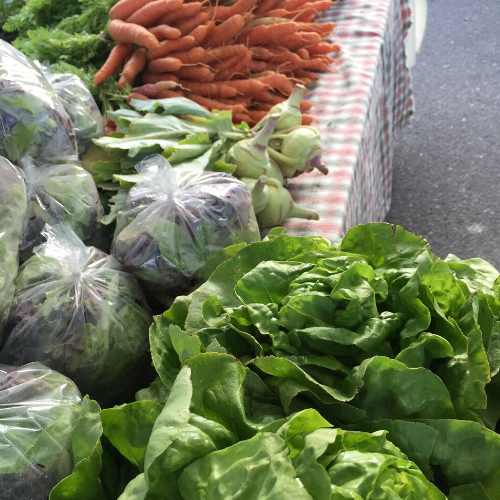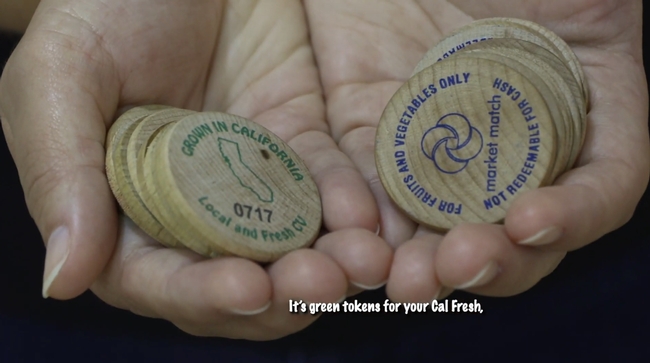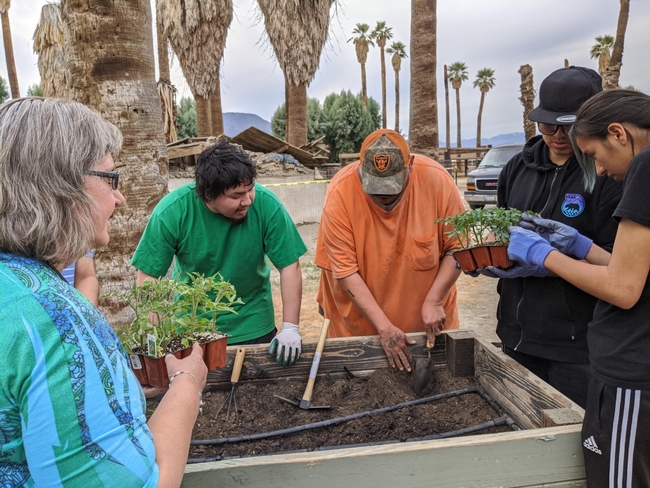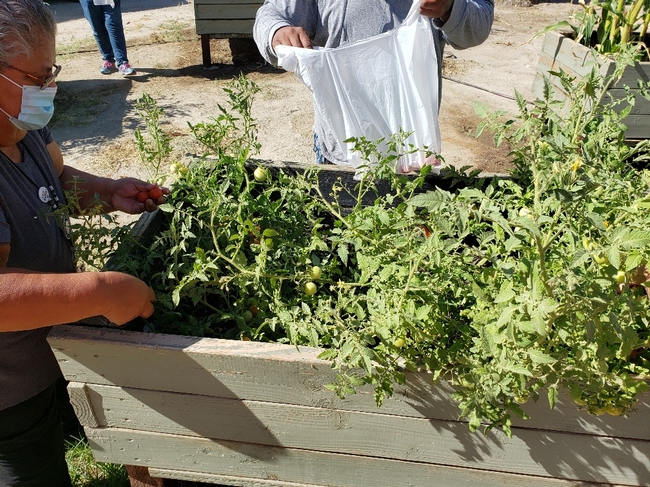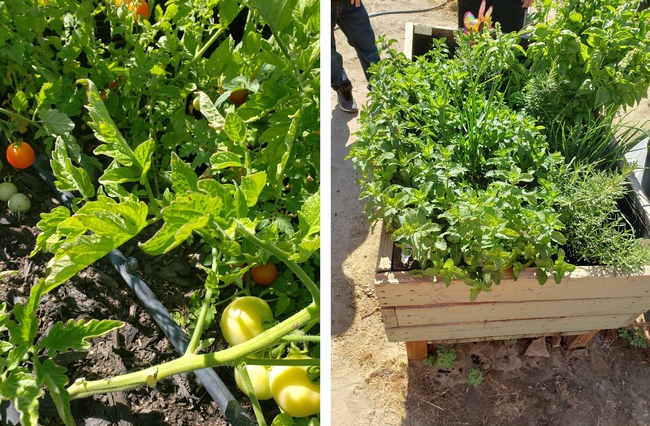
Posts Tagged: Chutima Ganthavorn
UCCE is helping CalFresh shoppers double food dollars at farmers markets
Across California, CalFresh shoppers can use their EBT cards at most farmers markets and double the value of their benefit, up to $10 per family each market day.
“This benefit is underused,” said Chutima Ganthavorn, nutrition, family and consumer sciences advisor in Riverside and San Bernardino counties. “There may be a perception that farmers market prices are higher than in regular grocery stores.”
To help promote the Market Match program that makes shopping at farmers markets more affordable for CalFresh customers, Ganthavorn worked with the UC Agriculture and Natural Resources news and information outreach in Spanish office to develop videos in English and Spanish that clearly explain the program for potential users.
“Our program, CalFresh Healthy Living, UCCE, provides nutrition education to CalFresh-eligible participants in Coachella Valley to promote increasing consumption of locally grown, fresh fruits and vegetables,” Ganthavorn said. “Increasing buying power at farmers markets helps participants incorporate delicious, local produce into affordable meals for the whole family.”
To use Market Match, CalFresh recipients visit a kiosk at the market and use their EBT card to purchase $10 in wooden tokens. The program provides an additional $10 in tokens for purchase of fruits and vegetables only. The $20 can then be used to purchase items at all the farmers' booths that day at the market. Shoppers can look up participating farmers markets by going to FMFinder.org.
“Wow! These (videos) are terrific,” said Megan Goehring, the manager of the Palm Springs farmers market. “Will share on social media today.”
Senior Farmers Market Nutrition Program vouchers and Women, Infants and Children vouchers can also be used at participating farmers markets.
Below are the videos and their YouTube URLs for easy sharing:
Spanish -
English - https://youtu.be/dz6R_l123AE
Torres Martinez Desert Cahuilla Indian Tribe members create a healthy garden
At the end of February, before COVID-19 disrupted normal life, members of the Torres Martinez Desert Cahuilla Indian Tribe, in a remote area of Riverside County, gathered to plant vegetables and herbs in the A'Avutem (elders) garden.
Six raised garden boxes were installed several years ago with funding from the California Rural Indian Health Board, but stood empty. UC Cooperative Extension nutrition, family and consumer sciences advisor Chutima Ganthavorn and vegetable crops advisor Jose Aguiar obtained approval from the Tribal Council to engage the Youth Council in planting a new garden with seniors.
This intergenerational group planted chili peppers, bell peppers, onions, cherry tomatoes, tomatoes, corn, mint, basil and lemon grass Feb. 27. Select tribal members, including three youth and six seniors, harvested produce on the morning of May 12. While wearing masks and practicing social distance protocols, they harvested three boxes of tomatoes, onions, bell peppers and chili peppers.
"It is really nice to see the fruit of their efforts," Ganthavorn said.
UC Cooperative Extension takes community gardening to a new level in Riverside
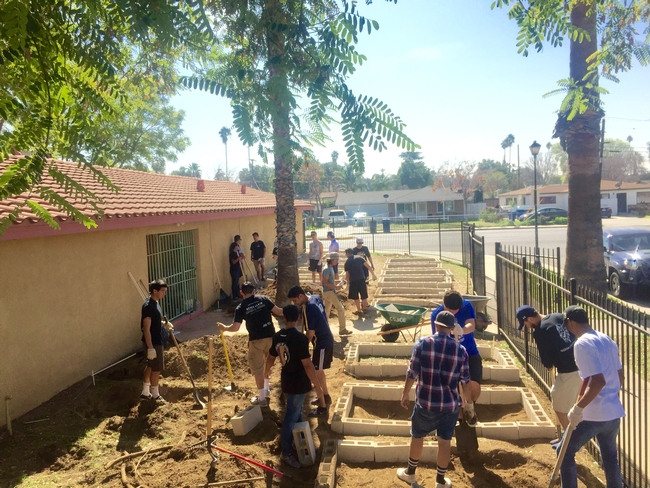
UC Cooperative Extension in Riverside County is bringing together students, agencies, nutrition educators and gardening experts to work alongside families to grow produce in garden plots at a community facility.
“Many people don't know how to get started gardening,” said Chutima Ganthavorn, the nutrition, family and consumer sciences advisor for UCCE and manager of its local UC CalFresh Nutrition Education Program. “Gardening takes space, water, resources like seeds and transplants, plus guidance and support. Our group is going the extra mile in Riverside County to help people grow and eat healthy food.”
This year, the local coalition received $10,000 in support from the Kaiser Permanente Heal Zone project to expand a vegetable garden at the Community Settlement Association (CSA), a center where community members gather for UC CalFresh nutrition classes, weekly food distributions and other services.
“A few years ago, the garden plots at the Community Settlement Association were neglected and weedy, while families struggled to get healthy food,” Ganthavorn said. “UC CalFresh teamed up with UCCE Master Gardeners and CSA staff to turn them into bountiful and beautiful edible gardens. Now our coalition is growing to include UCR Community Garden and Heal Zone members, including folks from City of Riverside Parks and Rec and Riverside Community Health Foundation.”
In 2014, UC Master Gardener volunteers, nutrition educators and members of the community planted vegetables in five existing garden boxes at Community Settlement Association, 4366 Bermuda Ave. in Riverside.
For planting day, neighborhood families – many who had taken part in UC CalFresh nutrition classes at the CSA – tilled the ground and planted seeds and transplants to grow tomatoes, bell peppers, summer squash, lettuce, green beans and Swiss chard.
“We're fixing up a garden for the children,” said Gonzalo Rodriguez, who joined planting day with his family. “We're planting chili and tomato transplants and seeds, food that will provide vegetables and give the children the joy of caring for the plants.”
In 2015, UC CalFresh arranged a $500 grant from Wood Streets Green Team, a local group that promotes sustainable living, to purchase fruit trees. Master Gardeners led volunteers to plant blackberry bushes, and peach, pluot, nectarine, plum, fuji apple and mini mandarin trees. They also planted quince, pomegranate, lemon and lime trees donated by a Master Gardener.
With the Heal Zone funds and support from UC Riverside student Claudia Villegas, the recipient of a Global Food Initiative Fellowship from the UC Office of the President, an extended garden began to take shape.
Villegas recruited students from Sigma Alpha Epsilon and Phi Chi Theta fraternities to transform a lawn at the community center with cinderblock raised beds. She is coordinating training sessions and encouraging local families to visit.
“I want the community to feel comfortable coming to the garden,” said Villegas, a senior psychology major. “I want them to just come in and hang out and interact and talk about gardening problems.”
The raised-bed plots have been assigned to families in the community.
“They feel ownership and maintain the gardens,” Ganthavorn said. “They can keep the produce they grow, and any extra produce goes to the weekly food distribution program at CSA.”
A gardening club now meets from 9 to 10 a.m. the first Thursday of each month at the community garden. UC Cooperative Extension coordinates gardening workshops with UC Master Gardener volunteers and nutrition and cooking sessions with UC CalFresh educators.
A 4-H club for children in the community is also being developed at the CSA site by Claudia Diaz Carrasco, UCCE 4-H Youth Development advisor. The purpose of 4-H clubs is to help diverse young people discover and develop their potential and grow into competent, contributing, and caring citizens.
“We believe that CSA children will benefit a lot by participating in 4-H learn-by-doing activities within the club,” Diaz said. 4-H clubs usually meet in the evenings or on weekends and offer self-chosen multiple learning experiences.
Date label confusion leads to food waste

There are no federal guidelines for dating food products; 20 states have laws on the books about food dating, but they are inconsistent.
“Dates on manufactured food products usually indicate how long the food can be kept on store shelves for best quality, but it is unrelated to its safety,” Ganthavorn said.
Canned goods past the expiration date are still safe to eat if the can is not dented, rusted or swollen. On the other hand, perishable foods that have not reached the expiration date may not be safe to eat if they were not refrigerated properly.
Improved understanding of the dates on food products can help consumers avoid waste. “Sell by” is simply a guide for grocery stores. “Best if used by” indicates when the product is in optimum condition. “Use by” is a recommendation to consumers to eat the food with top quality and flavor. After these dates, Ganthavorn said, the product may not be at its very best, but it is typically still safe to eat if it has been stored and prepared appropriately. The key is to follow safe food handling and storage guidelines.
The University of California Global Food Initiative aims to put the world on a path to sustainably and nutritiously feed itself. By building on existing efforts and creating new collaborations among UC's 10 campuses, affiliated national laboratories and the Division of Agriculture and Natural Resources, the initiative will develop and export solutions for food security, health and sustainability throughout California, the United States and the world.

